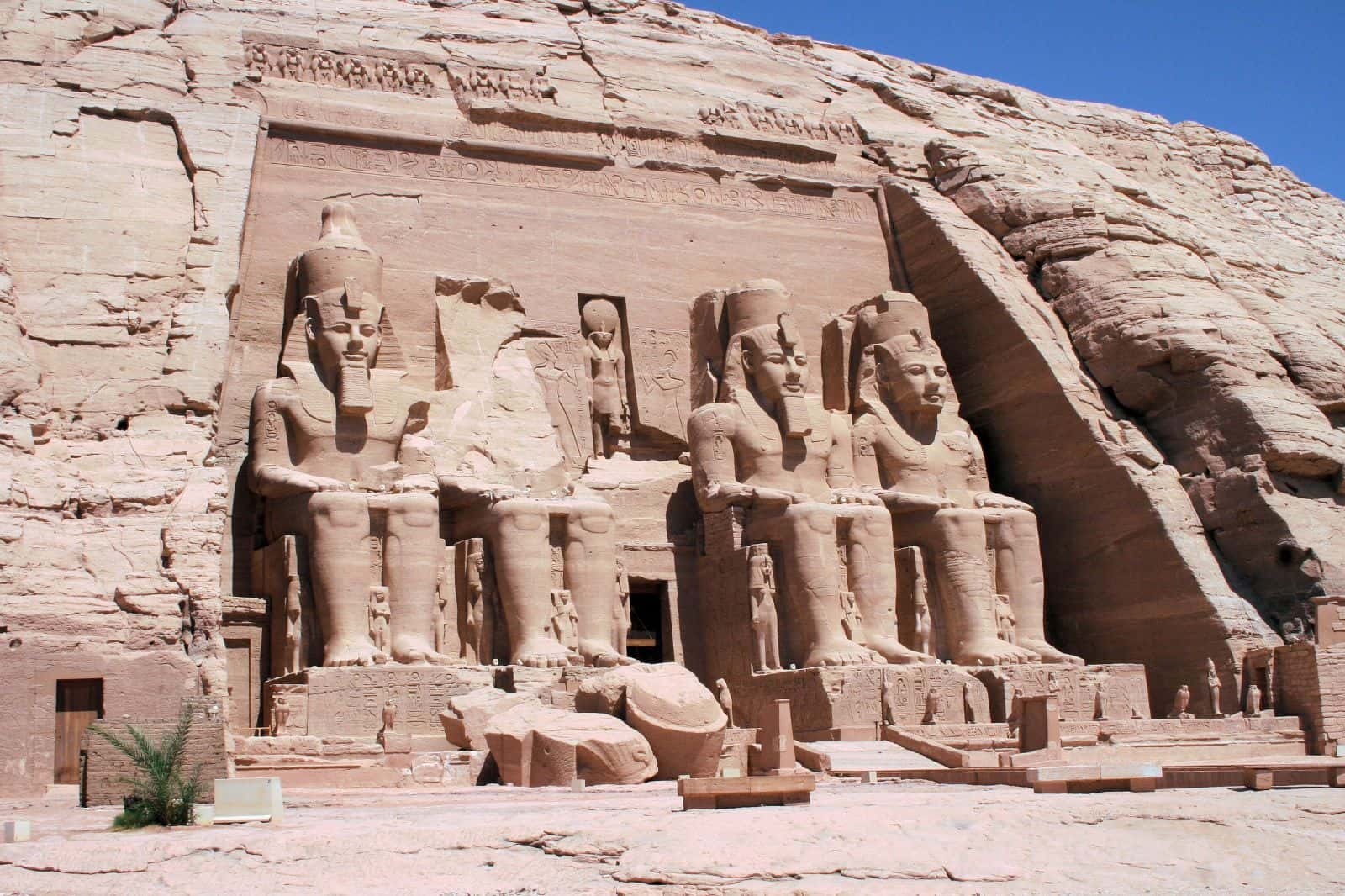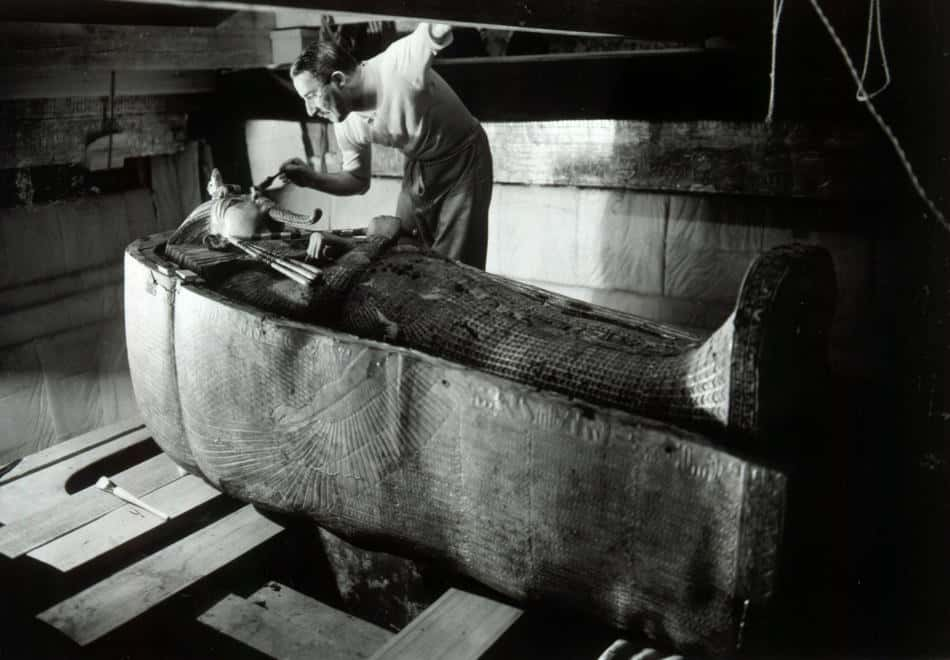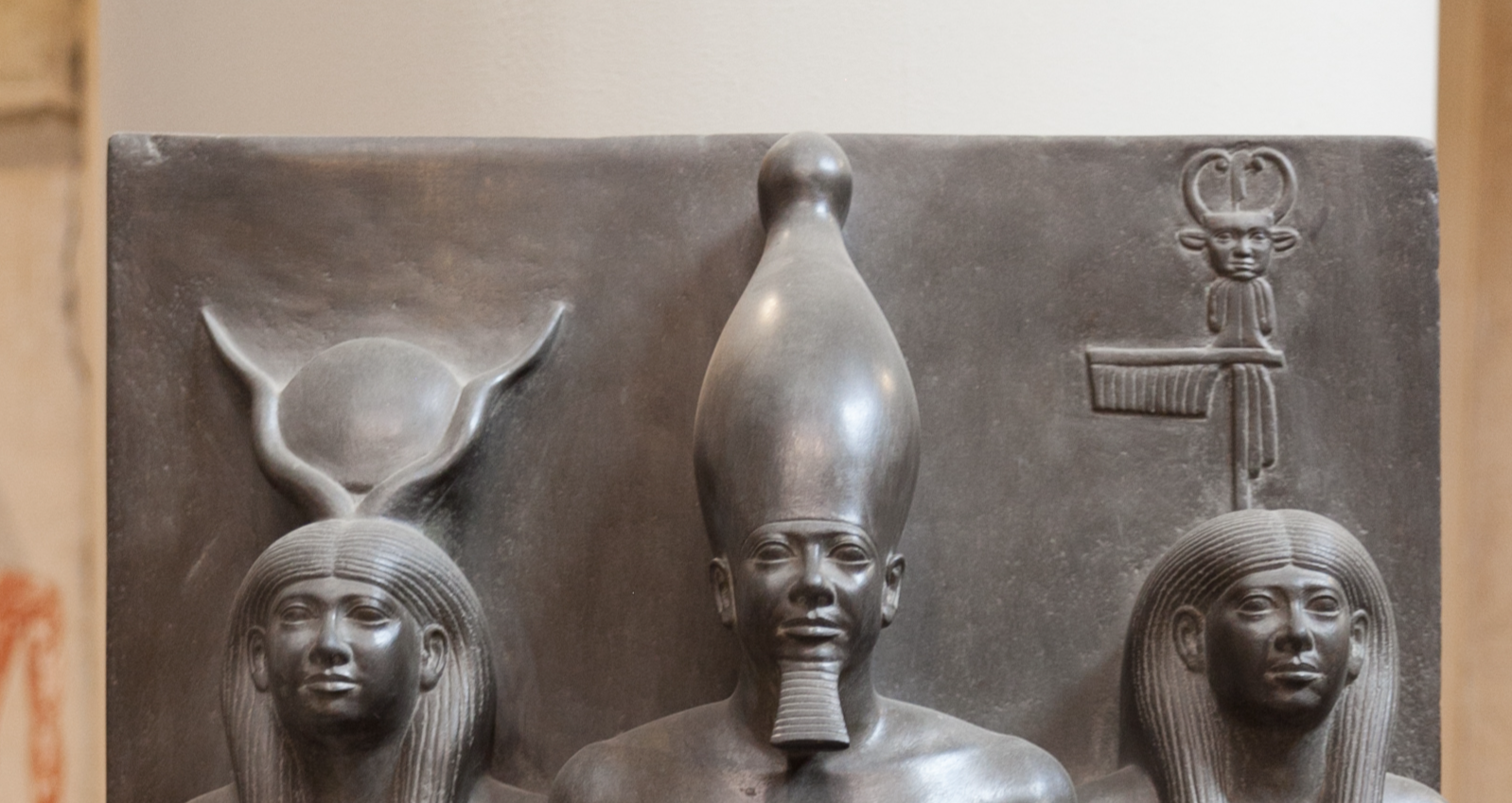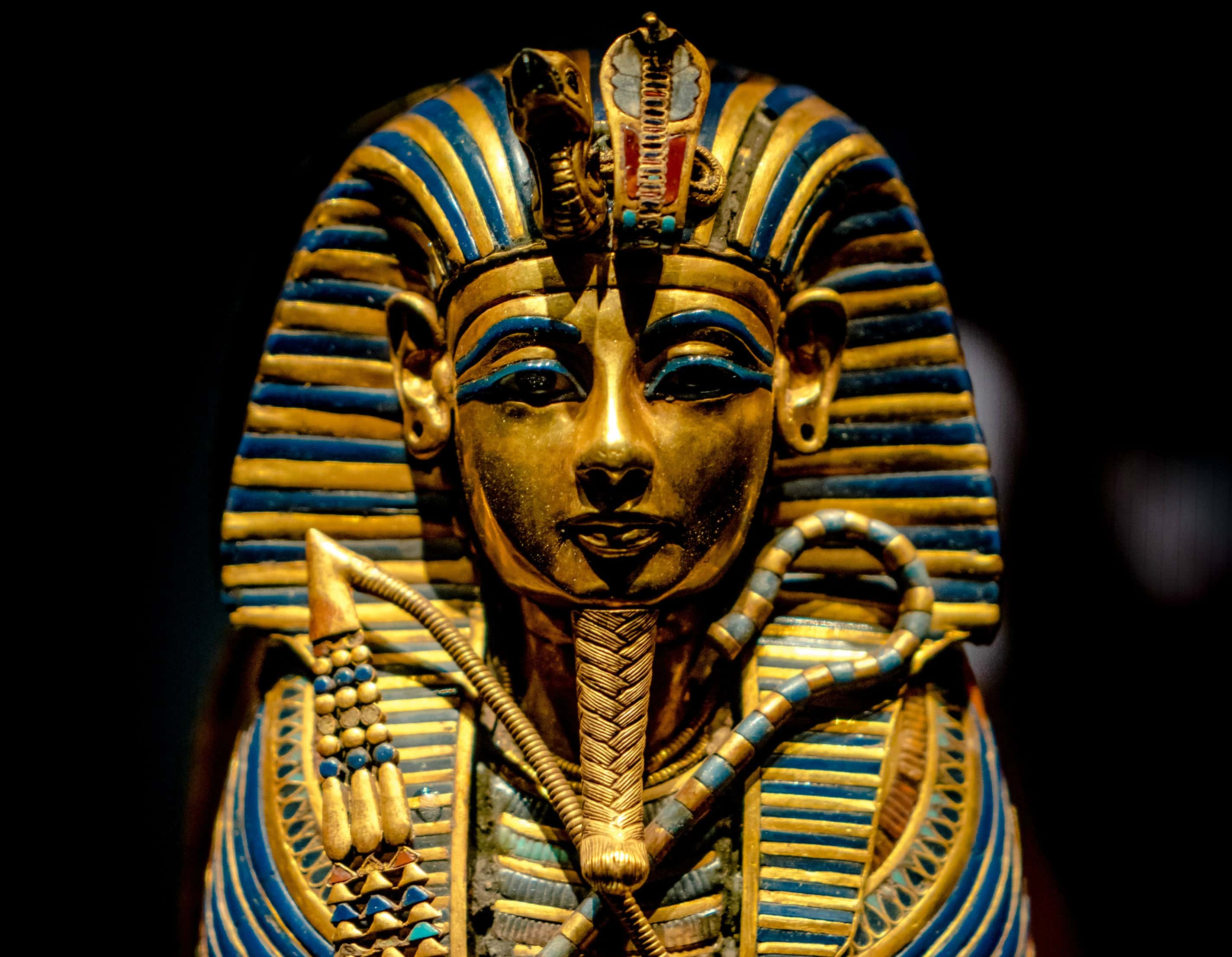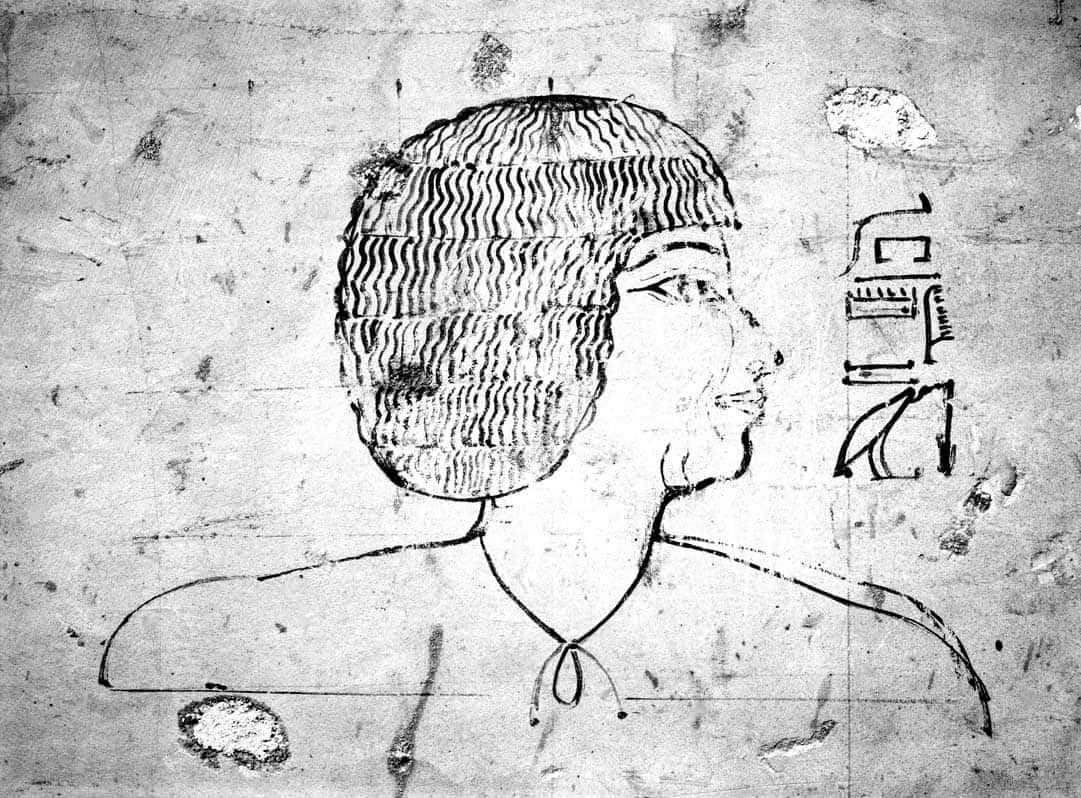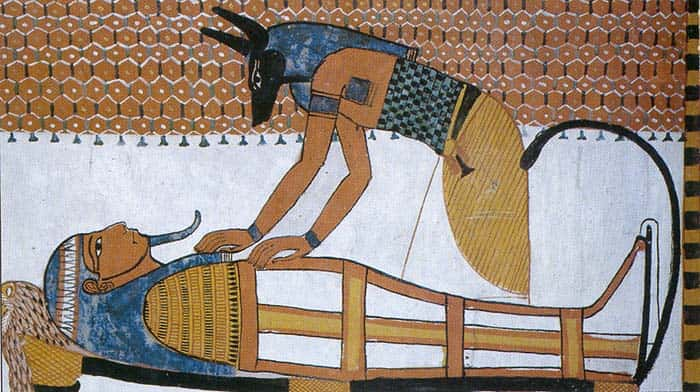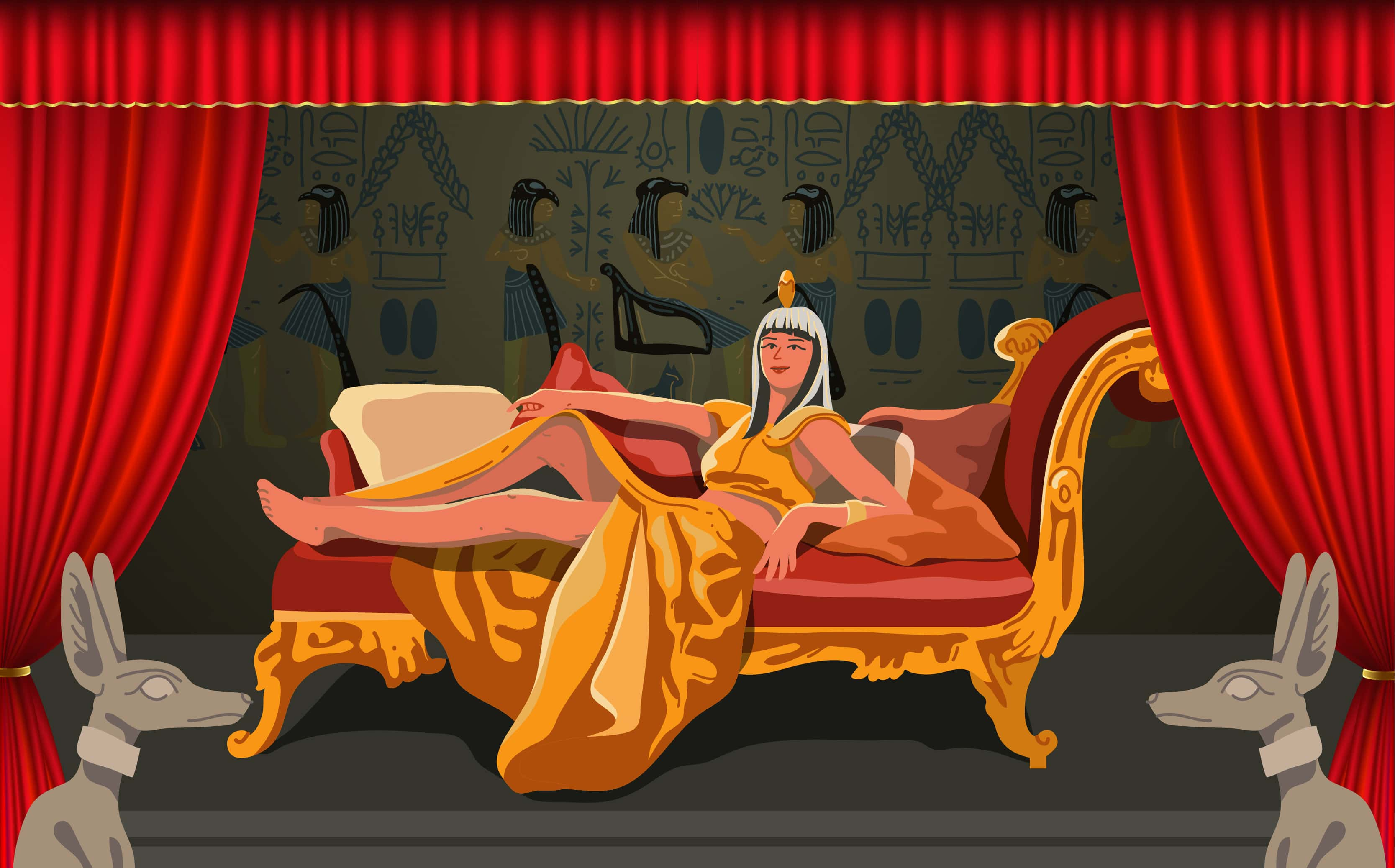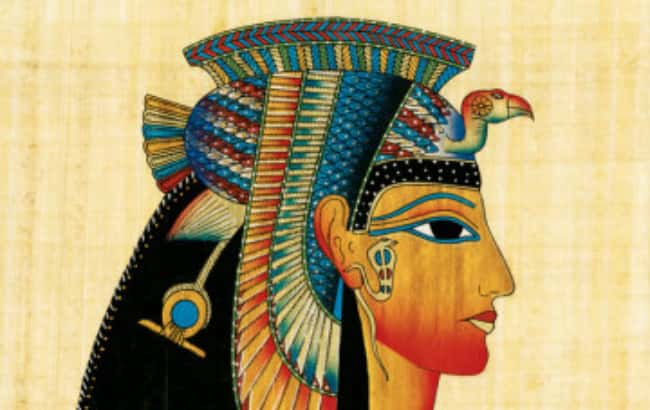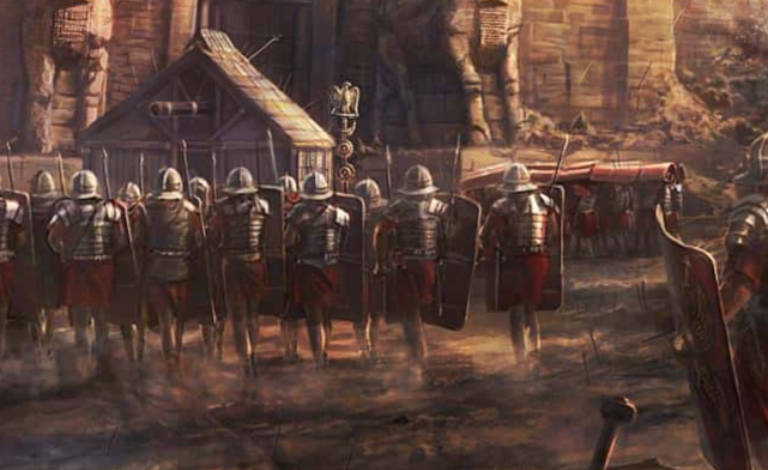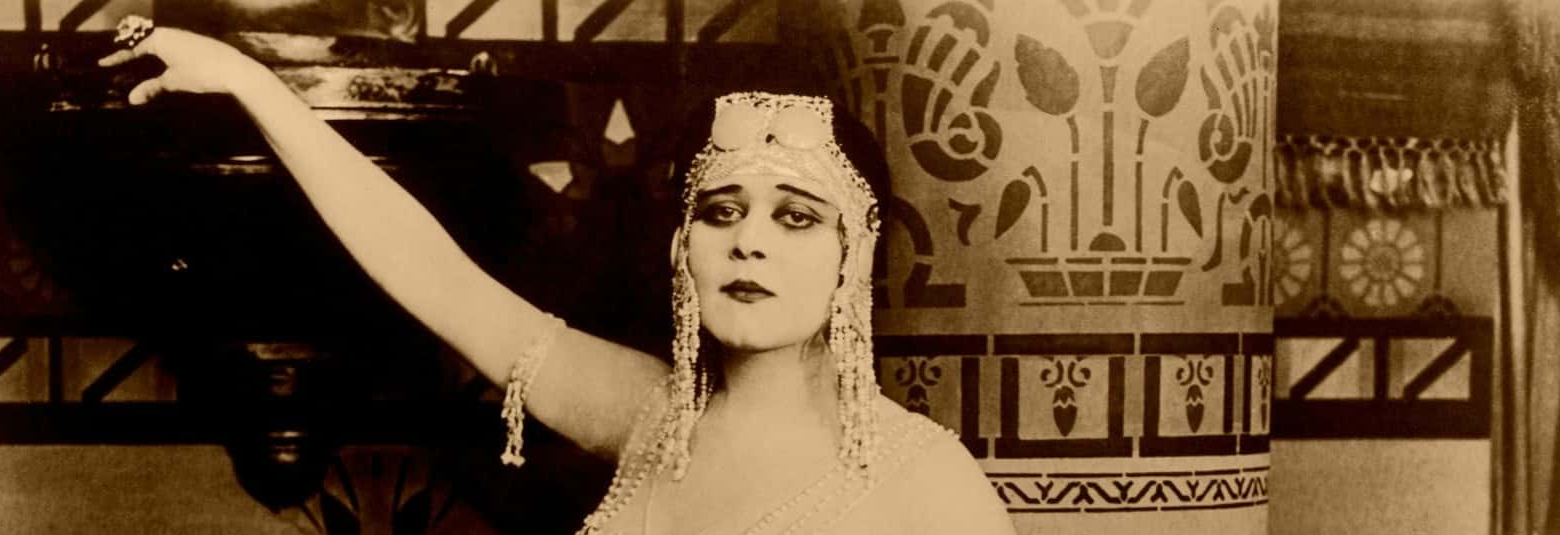The more we learn about ancient Egypt, the more fascinating it becomes. From mummification and luxurious tombs to twisted relationships between feuding pharaohs like Cleopatra and Tutankhamun, ancient Egypt's chilling secrets will intrigue anyone. Here are the most disturbing facts about the mysterious, unearthed world of ancient Egypt.
1. That's A Morbid Loot-Bag…
In 1881, long before discovering Hatshepsut's empty tomb in the Valley of Kings, archaeologists discovered a canopic box at another dig site. It contained an embalmed liver, an embalmed stomach, and a single human tooth. The box was inscribed with Hatshepsut’s name. For a long time, those were her only supposed remains. Until the mystery began to unravel. In 1903, the tomb known as KV60 was discovered by British archaeologist Howard Carter. Inside this tomb were the remains of two women. The first was believed to be Hatshepsut's nurse, but the other body could not be identified until a break in the case.
In 2007, researchers realized that the second mummy was missing a tooth and tested the single tooth they'd discovered decades earlier. The tooth matched the others in the mummy’s mouth, and Hatshepsut was found at last. When scientists and archaeologists did further testing on Hatshepsut's bones, they discovered her dark secret.
The Egyptian Queen lost her life to bone cancer and Hatshepsut seems to have had a skin disease of some sort during her life. Allegedly, Hatshepsut covered the effects of this skin disease with skin lotion, as you do. However, the lotion doomed her. It proved to be carcinogenic, which caused the cancer to develop within her body.

2. An A-maze-ing Discovery
Egypt is home to all sorts of mysterious ancient sites, but perhaps the most intriguing is the labyrinth which unwinds beneath Hawara. Mentions of the enormous Labyrinth of Egypt appear in the writings of Pliny, Herodotus, and Diodorus. Modern scholars wondered if they would ever find it, until everything changed on one special day in 2008...
3. An End
In 2008, a team of archaeologists scanned the ground near Hawara. What they found was astonishing: walls, several meters thick, joined together and forming several closed-off rooms. Could this be the ancient labyrinth? We might never know the truth. Egyptian authorities immediately halted further exploration for unknown reasons.
 Wikimedia Commons Muhammad Zahir
Wikimedia Commons Muhammad Zahir
4. Dual Roles
"Pharaoh" sounds fancy, but what did pharaohs actually spend their days doing? They basically had two roles. On the one hand, they were called the Lord of the Two Lands, meaning they ruled ancient Egypt and did political stuff like collect taxes, make laws, and start a whole bunch of wars (more on this later). They were also called the High Priest of Every Temple, meaning the pharaoh built temples and performed religious ceremonies. So basically, president + pope = pharaoh.
5. They’re Totally Fake!
Most statues of pharaohs depict them with long, tightly braided beards, but it was all a lie. The beards were completely synthetic. Cleanliness was highly important to the ancient Egyptians. For them, this meant keeping their faces free of hair. The beards were worn to imitate the god Osiris, who also wore a fake beard. Pharaohs believed that imitating his luscious artificial locks, they could also attain his eternal reign.
6. Worst Boss Ever
Akhenaten was an Egyptian ruler who was basically the worst boss possible. To build his new city in honor of the god Amarna, he brought 20,000 people to the site and forced them to work until they pretty much dropped deceased. The bones found in the town’s cemetery suggested that more than two thirds of the men broke at least one bone while they worked. And that's not even the worst part. The other third literally broke their backs. And if anyone tried to escape, he ordered them to be poked to end. Basically, the choice was either work to end or be liquidated.
7. Mr. Carter
Howard Carter was a British archaeologist who achieved worldwide fame when he stumbled upon one of the most famous discoveries of all time: the tomb of Tutankhamun. It wasn't an easy find. Carter spent years searching for the tomb... and by the beginning of 1921, his sponsor, Lord Carnarvon, threatened to pull his funding if he failed to find something soon.
Luckily, on November 4, a young water-fetcher changed everything. The boy stumbled on King Tut's by utter accident. He was simply digging in the sand with a stick when he uncovered the secret inner chamber.
8. The Boy-King
The boy-king Tutankhamun is one of the most famous ancient Egyptian pharaohs--for a chilling reason. No one quite knows how a Pharaoh could have lost his life so young. Over the years, scholars have wondered whether Tut was liquidated, or had a nasty a chariot accident (possible), an unfortunate encounter with a hippo (more plausible than you’d think), or an old-fashioned combination of malaria, a broken leg, and a bone disorder.
9. What Ended King Tut?
Whatever the cause, one thing is clear: Tut's burial was rushed. A microbiologist proved that the strange brown splotches on the walls of Tut's tomb show that he was sealed in before the paint had a chance to dry. Maybe someone really wanted Tut gone...
10. Fly-Over State
The ancient Egyptian port city Heracleion was said to have collapsed into the sea. Everyone thought it was a myth until 1933, when a British air force pilot spotted the undersea ruins. But it would take until 1999 for archaeologists to precisely locate the city and start exploring. Even though they’ve only visited less than 5% of the site, their findings have made scholars' jaws drop. In addition to coins, tools, and statues of gods, there are several statues of an Egyptian pharaoh that no one can recognize.
11. Preparing for the Next Life
During Egypt’s New Kingdom Period, the Egyptians built the Valley of Kings, a series of elaborate tombs for their pharaohs on the Nile’s west bank. The Egyptians, who believed in the afterlife, made sure their pharaohs were well prepared. They stocked the tombs with clothing, furniture, jewelry, sufficient food and drink for royal afterlife partying, and even beloved pets.
12. Anatomically Correct
Ancient Egyptian doctors had specialties, often focusing on one part of the human body. Dentists were known as “doctors of the tooth,” while the term for proctologists literally translates to “shepherd of the anus". We don't want any part of that Shepherd’s Pie.
13. Not Today Satan
Menkaure was a pharaoh who ruled sometime in 26th century BC. He hatched a brilliant scheme to fool the gods into keeping him alive indefinitely. If only it didn't backfire spectacularly...
Menakaure got the idea that if night never came, the new day couldn’t start, and time would basically stop (shower thoughts: Ancient Egypt edition). To pull this off, every night he lit as many lamps as possible and tried to pretend that it was still daylight. For the rest of his life, Menkaure didn’t sleep. Instead, he stayed up all night drinking and celebrating until his end inevitably came.
14. Save the Cats!
Ancient Egyptians, like myself, hold cats in very high esteem. While I base my adoration on their little toe beans, the Egyptians adored them because of their link with Bastet, the cat-headed goddess of conflict. As a result, it was not permitted to allow a cat to come into harm's way. But no one took this rule further than Pharaoh Psamtik.
When his (very clever) enemy released hundreds of cats onto the battlefield, Psamtik told his army to stop fighting. The enemy men liquidated anyone who challenged them and even used shields with cats painted on them. They definitely lost that battle. But at least the cats survived!
15. The Long Paw of the Law
Ancient Egyptians law enforcement officers were known to have trained dogs and monkeys assist them when they were out on patrol. We smell a sitcom.
16. A Periodic Break
In Ancient Egypt, men could take time off of work to care for menstruating wives and daughters. Good. Go fetch the monthly cheeto's.
17. We Heart Mummies
Mummification was not a pretty process. Each major organ was meticulously removed and sealed in its own sacred jar--but that's not even the grossest part. To get the brain out without ruining the body's face, the mummification squad would use a long utensil to scramble the brain around and then push the mush out of the nostrils. Cool. Cool cool cool.
18. Animal House
In addition to cats, Egyptians also revered hawks, ibises, dogs, lions, and baboons. These animals had a special place in the Egyptian home and were often mummified and buried with their owners after end. Hot take: if the ancient Egyptians had access to the Animal Planet channel, the pyramids would have never been built.
19. Strike One
Ancient Egyptian workers were incredibly tough and clever, and definitely not afraid to protest for better working conditions. The most famous demonstration was during the reign of Ramses III, when laborers building the royal necropolis did not receive their usual payment of grain. They decided to speak their minds by organizing one of the first strikes in history.
20. What’s Mine is Mine
Egyptian couples: they're just like us! Before weddings, couples were known to negotiate ancient prenuptial agreements. These contracts listed all the assets a woman brought into the marriage. In case something went wonky and the couple got divorced, she'd be compensated for all her goods. Tfw ancient Egypt is more progressive than most divorce courts.
21. Urine Luck
An ancient Egyptian named Pheros was angry with the Nile for refusing to cooperate and stop flooding. Enraged, he did something that would obviously help and threw a spear at the river. Then as punishment for disrespecting the Gods, he was blinded. A decade later, an oracle told him that washing his eyes with the urine of a woman who was completely faithful to her husband would cure his blindness. Sounds reasonable.
22. Like the Glass Slipper, but Pee
Pheros tried dousing his eyeballs with his wife's urine, but it didn’t work (ahaha). After that, he made every woman he could find pee in a pot so he could pour it on his eyes. Eventually, Pheros found the perfect pee. He poured it into his eyes and his sight was restored! He married the magic pee woman immediately and had his first wife burnt to end. What a legacy.
23. We’re Blushing
Both men and women in ancient Egypt were known to wear copious amounts of makeup. They believed their flawless looks gave them the protection of the gods Horus and Ra. They also believed that makeup had magical healing powers. When researchers looked closer, they figured out why. Apparently the lead-based cosmetics worn along the Nile helped stave off eye infections.
24. Keep It in the Family
There was one more theory about why the boy-king Tutankhamun lost his life at the tender age of 18. Some researchers believe he perished from a genetic disease brought about by an utterly chilling event. When Tut's mother got married, she knew her husband really well. They were closer than lovers, closer than friends. Guys, they were full on family. Tut's parents were brother and sister. Ancient Egypt was into Game of Thrones before it was cool.
25. Tyrion is Pleased
The ancient Egyptians had very high regard for dwarves and did not see them as having a physical handicap.
26. Name, Age, Occupation
Ramses II, also known as Ramses the Great, ruled for 96 years and is considered one of Egypt’s greatest rulers. His body was exhumed to be displayed in a museum and in 1974, the body was sent to Paris for some freshening up. Not wanting to tarnish the Pharaoh’s legacy by calling him luggage, the Egyptian Government granted him an official passport. The passport listed his name, age (about 3,000 years old), and occupation (King) and also included a disclaimer stating that he was deceased.
Maybe the fact that it was a body would have clued them in?
27. Religion Over King
The Pharaoh Akhenaten famously tried to get his people to stop worshiping multiple gods, and go monogamous with one main god, called Aten. This didn’t go so well for Akhenaten. Instead of abandoning their gods, the people rejected him, and upon his end, revealed the depths of their hatred with a chilling gesture. They took every measure possible to erase him from history. Anything with his image was destroyed (including full-on temples) and all mentions of his rule were erased.
They didn’t fully succeed, however. In the 19th century, a few surviving items with his name were discovered.
28. Welp
Ancient Egyptians practiced scatomancy, the act of telling the future through someone’s waste.
29. Back when the Targaryens Were Considered Normal
Known as “the first great woman in history of whom we are informed,” Hatshepsut reigned as Pharaoh of Egypt during the 15th century BC. Born into the royal family, Hatshepsut had a...unique marriage. She wed her half-brother, Thutmose. But that's not event the worst part. Hatshepsut was only 12 years old at the time of the marriage ceremony.
30. Assuming the Mantle
Hatshepsut knew how to hustle. After her husband/brother Thutmose II lost his life, the next ruler should have been his son. But there was just one problem--that turned into a golden opportunity for Hatshepsut. Thutmose's kid was way too young to rule Egypt. Who could step in? The boy’s stepmother, Hatshepsut, became the regent. Get it, Hatshepsut.
31. No Hard Feelings?
Although she began her rule as the regent for her nephew and stepson, and took the role of Pharaoh for herself, Hatshepsut never once took an effort to kill or disinherit Thutmose III. In fact, he held command of all her armies during her reign as Pharaoh. But that may have all changed after Hatshepsut lost her life...
32. Origin Story
For obvious reasons, pharaohs loved coming up with stories about how they were connected to gods. Hatshepsut claimed that her mother was impregnated by the god Amun, who assumed the form of Thutmose I during the coupling. The Egyptian queen also said that she was born in a lioness’ den, which her mother was brought to by another god, Khnum.
But I'm left with one, very soap opera-y question: if Amun possessed Thutmose I during Hatshepsut's conception, is she still related to her brother/husband?
33. Jim and Pam: Ancient Egypt Edition
The man behind the Mortuary Temple of Hatshepsut was an architect named Senenmut. Born from a very common background, Senenmut worked hard and rose to astonishing class heights during Hatshepsut’s reign. Not only was he the architect, he was also the high steward. If one theory can be believed, Senenmut was also the lover of Hatshepsut.
34. I Ship It
One such clue to Hatshepsut and Senenmut's steamy affair is the fact that the queenly pharaoh allowed her boy toy to inscribe his own name and image within the Mortuary Temple. But there's another far more scandalous piece of evidence: in a rest house used by Senenmut's workers, super-old graffiti portrays a man and a pharaoh getting nasty. The man would presumably be Senenmut and the pharaoh (who is portrayed as being hermaphroditic) would be Hatshepsut, a female king.
35. I Need Options
Like her father, Thutmose I, Hatshepsut has a tomb in the Valley of the Kings. Not content with just one final resting place, however, Hatshepsut demanded two more. And yes, this whole multiple graves business will make archaeologists' lives very hard. For example, when researchers found Hatshepsut's royal tomb, they noticed one thing was missing: her body.
36. Egyptian Dennis the Menace
Pepi II was only six years old when he became King of Egypt, and he behaved exactly as one would expect a spoiled young prince to act. When an explorer wrote to him claiming to have met a dancing pygmy, he ordered the man to bring it to the palace so he could see it for himself. His attitude didn’t change with age. He made slaves strip uncovered and cover themselves in honey just so the flies wouldn’t bother him.
37. The More Things Change
In one of the stranger Egyptian myths, three gods named Seth, Isis, and Osiris lived out a bizarre soap opera plot. Basically, Seth ended Osiris and put his body in a chest. Then he found the chest with Osiris’s body during a hunting trip. Triggered by the discovery, Seth did the super reasonable thing of cutting the body in fourteen pieces and scattering them across Egypt. In the end, Osiris' wife Isis brought her hubby back, but with one strange alteration.
Apparently, a fish ate Osiris’s intimate parts. Isis found the other thirteen pieces but made her man a brand new package. Sure, Isis. A fish ate your husband's junk and you just had to make him new material. Sure.
38. Hatshepsut Who?
More than 20 years after Hatshepsut’s end, her successor, Thutmose III dealt her a chilling betrayal. All the temples and statues associated with Hatshepsut were defaced and damaged. This was allegedly a case of “damnatio memoriae,” where a person is condemned with erasing of their existence. Luckily for historians, they didn’t do a good enough job to suppress Hatshepsut.
39. What’s the Cause?
Researchers think that Thutmose III defaced Hatshepsut’s monuments for a dark reason: he secretly held jealousy and spite for the woman who prevented him from taking the throne. However, this reason avoids the fact that Thutmose III seemed pretty happy during Hatshepsut's reign. After all, he was politically active and commanded armies. So what happened?
40. A Raw Deal
Even stranger, the damage wasn’t ordered until Thutmose III was an old man. Current historians think that Thutmose III ruined his stepmom's legacy to stop Hatshepsut’s relatives from trying to seize power. Instead, Thutmose wanted to make sure that his heir got on that sweet, sweet throne. Fair, but still a raw deal for Hatshepsut.
41. Gender Studies
Inscribed pottery from the Middle Kingdom of Ancient Egypt includes a curious detail: it lists three human genders. Seems like ancient Egypt was way ahead of the curve when it came to their transgendered bathroom policies.
42. Ancient Egypt Instagram Filters
Even though her sarcophagus depicted her as slender and athletic, Hatshepsut was said to be obese and bald.
43. Town of Cut Off Noses
The pharaoh Amasis was overthrown by an Ethiopian named Actisanes who dealt with criminals in a truly cold-blooded fashion. He'd cut off their noses and send them to a remote town. The criminals were the only inhabitants, and they were left to fend for themselves, living off contaminated water and debris. Amazingly, when Romans wrote about the town, they called it the “height of benevolence". Basically, losing your nose and being banished was a hit on the wrist.
44. Holy Seed
Ah, ancient Egypt. The time of the pharaohs, the birth of the pyramids, truly an incredible civilization. And yet, also a place where pharaohs would regularly expel into the Nile River. Since pharaohs were only one step below a God, they would often fill the river with their “holy seed". It was supposed to encourage life to rise from the water and give them a good harvest, but it probably just spread some awkward diseases.
45. Planned Parenthood
The Egyptian Kahun Papyrus (1850 BCE) suggested using crocodile waste either as a contraceptive or as an abortion drug. We’re not doctors, but we’re sure that smearing yourself in poop would deter anyone from wanting to have a baby with you.
46. Ahh!
In 1886, Gaston Maspero found an unwrapped mummy, now known as Unknown Man E, in a seemingly tortured position with his mouth unhinged. While researchers learned that if you don't strap the chin to the skull, the mummified mouth will fall open into a terrifying position, they soon discovered that the mummy's look of horror was well deserved.
DNA evidence suggests that this mummy was Prince Pentawere. When his plot against his father, Rameses III went downhill, Pentawere edned himself, leading to a hasty mummification process.
47. Uncovered Truth
In ancient Egypt, children wore no clothing until they were in their teens.
48. When You Gotta Go
Many Egyptian tombs included toilets. Turns out, you CAN take it with you.

49. Delivered in Her Birthday Suit
Cleopatra had no qualms about taking advantage of her femininity to get what she wanted. To get Caesar to cooperate with her, she hatched an ingenious plan. The Egyptian Queen supposedly stripped uncovered , wrapped herself in a carpet, and delivered herself to Caesar as a gift. When he unrolled the carpet, Cleopatra’s uncovered form it was revealed. Soon enough, the pair started an affair and became one of the most powerful couples in the world.
50. Reproductive parts of Failure
The Pharaoh Sesostris was one of Egypt’s greatest army commanders, though he used an utterly bizarre ritual to celebrate his victories. After every battle, he would set up a pillar with a picture of intimate organs engraved on it. If his opponent fought courageously, he carved a picture of a man's intimate organs. If he thought they fought cowardly, he carved a woman's intimate organs. He left the pillars all across the continent, and some still stood 1,500 years later in Syria with the inscription “intimate organs of failure".
51. Pharaoh Hefner
Ramses the Great had 8 official wives and nearly 100 concubines. He was over 90 years old when he lost his life in 1212 BC. He lost his life a very gross, but very happy man.
52. Bundle of Joy
Traces of nicotine and substances were found in Egyptian mummies.
53. Queen of Egypt
Nefertiti is one of the most iconic, though also mysterious, figures of Ancient Egypt. She was the Great Royal Wife of Pharaoh Akhenaten and the stepmother of Tutankhamun, AKA the one Egyptian pharaoh anyone can name on Jeopardy. She became the queen of ancient Egypt at just 15 years old.
54. Keep It in the Family
When Tutankhamun lost his life, the role of Pharaoh passed to super-old Ay. Here's where it gets nasty. Ay was Nefertiti's dad and apparently, he celebrated becoming Pharaoh by marrying Akhesenamun (you know, the really hot girl from The Mummy movies). There was just one problem: Akhesenamun was Nefertiti's daughter, meaning Ay married his own grand daughter. Ewwwwwwww.
55. That’s One Way to Do It
As mentioned earlier, Tutankhamun wasn’t Nefertiti’s son. While she had six daughters with her husband, she never produced a male heir. As the pharaoh, he really had his pick of the litter when it came to procreation. So he made...a choice and fathered Tut with either one of his sisters or his cousins.
56. Basically, I Rule!
Nefertiti did way more than have babies and watch her husband bonk his relatives. She also performed tasks normally assigned to Pharaohs, becoming a co-ruler in her own right. While queens in ancient Egypt didn’t enjoy a lot of power, Nefertiti artistic depictions of Nefertiti show the queen either beside the Pharaoh and performing tasks or straight up standing in the Pharaoh's place. That's a power move.
57. And Like That, She’s Gone
Nefertiti suffered an unusually chilling fate: instead of being executed or tormented, she simply disappeared. No one knows when, where, or how Nefertiti lost her life. What we do know is that illustrations of her, which used to be plentiful in ancient Egypt, disappear around the 14th year of her husband’s reign as Pharaoh. Her body is shrouded in mystery, with many researchers believing that it will never be found.
58. Laid to Rest
According to a bizarre theory, many of the infamous mysteries of Tutankhamun’s tomb could be attributed to the fact that it might have been originally built for Nefertiti. The wall markings indicating a hidden doorway and the small size of the tomb have led some to believe that it was built for a Queen, but that the real estate was passed on to Tut after Nefertiti “disappeared".
59. Secret Secret, I’ve Got a Secret
Pharaoh Smenkhkare briefly ruled ancient Egypt while he was married to Nefertiti’s daughter. However, there is a truly jaw-dropping theory among historians. They believe that Smenkhkare was actually Nefertiti, ruling behind a male name. The theory states that she ruled as a female king before relinquishing her position to Tutankhamun.
60. Lovebirds
Artwork depicting Nefertiti and Akhenaten reveals a surprising secret about the couple, not usually seen in artwork depicting royal couples in ancient Egypt. They are often shown as quite physically close, which was uncommon at the time. They’ve been depicted riding in chariots together and kissing in public, among other things.
61. The Mystery
Many theories abound over why Nefertiti disappeared from hieroglyphs. She may have been exiled when she abandoned the faith that she and her husband established. But there's an even more heart-breaking possibility. The queen's daughter lost her life in childbirth shortly before Nefertiti's disappearance. One of the last images of Nefertiti is a depiction of her mourning her daughter. Some researchers think that she may have taken her own life in despair.
62. What Woman?
Being a female ruler in Ancient Egypt was definitely not easy, and Hatshepsut took extraordinary measures to accomplish her goals. For most of her rule, she wore an unusual disguise, masquerading as a man both in person and in pictures. She ordered artists to depict her with big muscles and a beard. She would also introduce herself as “Son of Ra”, and most likely wore a fake beard as well.
63. Fast Food Diet
The pharaohs clearly never heard of the food pyramid, because their diets were practically the equivalent of living on McDonald’s today. Their diets were extremely high in carbs and sugars from food and drink like bread, honey, booze , and grape drink. Examinations of mummified pharaohs reveal that most were overweight and unhealthy. They also may have suffered from conditions like diabetes. Honestly life as a pharaoh in ancient Egypt sounds pretty good, guys.
64. Bloodline
Like the Greek gods, some of the Egyptian deities also kept it in the family. Siblings Geb and Nun gave birth to Osiris, Isis, Seth, Nephthys, and Horus. Tfw a family tree is just a jumble of awkwardly intersecting branches.
65. Booze O’ Clock
The sun God Ra, like the Old Testament God, learned humanity was plotting against him and figured we needed some punishment. Ra sent Sekhmet, his lion-headed daughter, down to dole out vengeance. When Sekhmet got a little carried away, Ra came up with a pretty funny plan to stop her. He got her inebriated on red booze , the next best thing to the blood she craved. Once Sekhmet fell asleep, she became a peaceful cat.
 Kemetically Speaking - WordPress
Kemetically Speaking - WordPress
66. Hallelujah
Sobek was the god of a very specific domain. His Nile crocodile head represented the Nile crocodiles feared by travellers. Praying to him was meant to keep them safe from being charged by the terrifying creatures. Here's the weird part: in true Bond villain fashion, many temples kept live crocodiles in their pools to show reverence for the god. Church and crocodiles, like PB&J.
67. Odd Eyes You've Got There
The eyes of Pharaoh Ramses IV, who lost his life in 1149 BC, were replaced with a couple of small onions during the mummification process. Ancient Egyptians associated the onion with mysticism and though them to possess magic powers.
Even today, over years after her end , Cleopatra remains one of history’s most intriguing and memorable women. The Egyptian Queen commanded her own army, enamored not one but two Roman rulers, and inspired countless works of art, literature, and film. Her prowess as a ruler made her legendary, and the stories of her romances with Julius Caesar and Marc Antony made her unforgettable. Here are 46 Dazzling Facts about Cleopatra, Queen of the Nile.
68. The Beauty Myth
The name “Cleopatra” has become synonymous with exotic beauty and allure, but the real Cleopatra’s beauty was further down the list of her charms. Coins showing her face display a somewhat homely woman with a hooked nose. She likely made herself appear more masculine in looks and in manner, in order to project a more powerful countenance.
69. Smudge Campaign
The reputation Cleopatra acquired as a brazen beauty and irresistible temptress is far from a modern construct. Accounts from ancient Roman history depict Cleopatra using her feminine charms to bewitch and influence a bevy of powerful men. Her wit and intelligence were often overshadowed entirely by her sexiness in accounts written by her Roman critics AKA haters.
70. Young Queen
When Cleopatra was 14, tragedy struck. Her mother lost her life under mysterious circumstances. Strangely, this terrible event paved the way for Cleopatra to become a true boss. Her father promoted the teenage Cleopatra to become regent and deputy. She ruled alongside her father for four years, during which time she gained valuable knowledge and experience.
 Sea
Sea
71. Keeping it in the Family
When Cleopatra’s father, Pharaoh Ptolemy XII, lost his life, his will made 18-year-old Cleopatra and her 10-year-old brother joint rulers. A per custom, she was forced to marry her brother. Great. Love that for her.
73. Sibling Rivalry
Within months of taking the throne, Cleopatra made it clear that she had no interest in sharing power with her younger brother. Despite traditions of female rulers being subordinate to males, Cleopatra erased her brother Ptolemy XIII’s name from official documents. In a truly petty and amazing move, she made sure that only her face appeared on coins minted during their reign.
74. Dethroned
In 50 BC, only a year after she ascended to the throne, Cleopatra became embroiled in a dispute between Roman men in arms and a Syrian governor. When Cleopatra sided with the Syrians, the Romans retaliated with a brutal act. They helped her husband-brother Ptolemy XIII take the throne from her.
75. A Second Defeat
Cleopatra wasn’t about to give up her throne that easily. After a coup installed her brother as ruler, she drummed up mercenaries, formed an army, and fought against her brother’s army at Pelusium. Sadly, our girl didn't win. In the end, Cleopatra fled with her sister, Arsinoe IV.
76. Diplomatic Scuffle
Cleopatra’s younger brother Ptolemy XIII now sat on the Egyptian throne at only 13 years old. While you'd hope that advisors would keep him in line, he ruled with all the maturity and tact one would expect from a preteen. He became utterly ruthless. Ptolemy didn't just order the execution of Pompey (one of Julius Caesar’s enemies). He ordered for the man to die in front of Pompey’s own wife and children.
77. Backfire
Caesar didn't like Pompey, but his mistreatment to Pompey was too much. Caesar seized the Egyptian capital and installed himself as arbiter between the opposing claims of Cleopatra and Ptolemy XIII to the Egyptian throne.
78. Age Difference
Caesar and Cleopatra are one of history's most notorious couples, but few people know their dark secret. When they got together, Caesar was 52 years old. Cleopatra was just 21.
79. Love Child
But I guess to Caesar and Cleopatra, age (and political power) ain't nothing but a number, baby. They were lovers for two years and in 47 BC, Cleopatra even gave birth to Caesar's son, Ptolemy Caesar. She called her baby Caesarion, or “little Caesar". And now I want pizza.
80. Illegitimate
There was just one problem. Caesar was already married and had children. Yeah, awkward. Despite Cleopatra’s wish that their son would be named heir and successor to Caesar, he refused. Instead, he dealt her a cold her a cold-hearted betrayal. Caesar named his grand-nephew Octavian—who ruled under the name Augustus—as his successor instead.
81. Not Her Sister’s Keeper
Though they were forced to flee from Egypt together after Cleopatra was dethroned by her brother Ptolemy XII, Cleopatra and her sister Arsinoe IV had a chilling relationship. Fearing Arsinoe was plotting to take over the throne herself, Cleopatra had Arsinoe liquidated on the steps of a temple in Rome. This caused a scandal, as it was a gross breach of temple rules, not to mention that it was a heinous act.
82. Keep Your Friends Close
Cleopatra was utterly ruthless. Her brother (and husband) Ptolemy XIII drowned in the Nile River during a battle with Cleopatra’s and Caesar’s army. After the conflict, she remarried her younger brother Ptolemy XIV to consolidate power, but later had him liquidated so that her son could rule as co-regent. Along with her sister, Arsinoe IV, Cleopatra had a hand in the deaths of three of her siblings.
83. A Grand Entrance
Cleopatra's meeting with Marc Antony was truly dramatic. When she was summoned to meet the Triumvirate (aka the three men who now ruled Rome), she sailed down the Nile on a golden barge adorned with purple sails and silver oars. Cleopatra, dressed as the goddess Aphrodite, arrived to meet Marc Antony. An impressive move, and one that endeared herself to Marc Antony, who fancied himself to be an embodiment of Dionysus, the Greek god of grape drink and revelry. In short, reader, he caught feelings.
84. Partners in Love
Despite two marriages (to her brothers) and an affair with a man 31 years her senior, it was when Cleopatra met Marc Antony that she found true love. The pair became lovers in 41 BC, and returned to Alexandria together. They were inseparable—they hunted together, drank together, played dice together, and she watched while he performed army exercises. They stood together as partners against Egypt’s enemies, and were married in an Egyptian ceremony—despite the fact that Antony already had a wife in Rome.
85. The Couple That Drinks Together…
Cleopatra and Marc Antony must have had some grand times together, in the true Dionysian style. The pair even started a drinking club—the society of “Inimitable Livers”—which indulged in feasts and booze-binges, and engaged in elaborate games and contests. According to lore, Cleopatra and Marc Antony enjoyed dressing up in disguise and wandering Rome while playing pranks on its unwitting citizens.
86. Pearls Before Romans
In one of Antony and Cleopatra’s elaborate contests, she bet him that she could throw the most expensive dinner in history. After an unremarkable first course, Antony mocked her attempt. However, when served his second course, he was shocked to discover that his dish contained only strong vinegar. That's when Cleopatra changed the game. She plucked a pearl from her earrings and dropped it into the vinegar, wherein it began to dissolve, and promptly gulped it down.
87. At conflict
Relations between Marc Antony and Octavian were breaking down. Antony was declared a traitor and ridiculed in Rome for “going native”—adopting Egyptian customs which Rome deemed uncivilized. Cleopatra was smeared by Octavian as a scheming seductress who used her feminine wiles to entrap one third of the Triumvirate. In 33 BC, it all came to a head. Rome declared conflict on Egypt.
88. Warrior Queen
Never the shrinking violet, Cleopatra personally led her own fleet of warships during the Battle of Actium in 31 BC. With her dozen ships, she fought along side Antony’s own forces in a final demonstration of her devotion to her lover. Alas, they were doomed to a heartbreaking end. The pair was outnumbered. After losing the battle, they fled to Egypt.
89. By Her Own Hand
According to sources from the ancient world, including various Roman historians and poets, Cleopatra lost her life by her own hand. The most common story is that she induced an asp (an Egyptian cobra) to bite her. She was gone in Alexandria in 30 BC, at age 39. However, there are many stories of Cleopatra’s end. Other historians suggest she may have swallowed poison, or poked herself with a pin dipped in snake venom.
90. The Romeo & Juliet of Ancient Egypt
Upon hearing of Cleopatra’s end , Marc Antony suffered an equally devastating end. He took his own life by stabbing himself in the stomach. But that's not even the worst part. Other stories, including the Roman historian Plutarch’s account, suggest that Antony heard a rumor of Cleopatra’s end and poked himself, only to find out she was still alive. He was brought to her and was gone in her arms, upon which time she also committed end. As wrote Plutarch, “what really took place is known to no one".
91. Egypt’s Last Pharaoh
Cleopatra’s reign would have been a tough act to follow, and as it happened, no one did. After passing , the history of Egypt’s great dynasties fell away, and in 30 BC, the country disappeared under the sandal of Rome, becoming a mere province of the great Roman Empire. Cleopatra’s legacy remains as the last true Queen of Ancient Egypt.
 Wikipedia
Wikipedia
92. It Looks Like a Jackal
Anubis is often depicted with the head of a jackal for a disturbing reason. Jackals are believed to be the animal of choice for Anubis due to their scavenging habits. They also lived on the edge of the desert, where cemeteries were located. Because of these dark associations with the gone, jackals came to symbolize the guardians of the deceased in ancient Egypt.
93. Is This a Dagger I See Before Me?
When King Tut’s tomb was unearthed, researchers found an iron dagger that was still remarkably sharp thousands of years later. Having a sharp dagger is not strange in itself, but the dagger’s origin is quite mysterious. Scientists have tested the metal and determined it came from a meteorite, and the ancient Egyptians most likely didn’t have the technology to craft a weapon from meteorite debris.
As a result, it either came from another more advanced civilization or, as some are convinced, it might have been left behind by aliens.
94. From the Grave
Just try to keep this soap opera straight. According to religious beliefs in ancient Egypt, the god Osiris was married to his sister, Isis (it only gets wonkier). The happy union was disrupted when Osiris was liquidated by his brother, Seth. Osiris was imprisoned in a chest, and the chest was then thrown into the river. Isis then used magic to bring Osiris back to life. The two then conceived their son, Horus. Horus would go on to avenge his dad’s end.
95. The Missing Piece
The specific way that Seth liquidated Osiris is...pretty weird. He created a chest, or container, made specifically for Osiris. During a dinner party, Seth offered that whoever could fit in the chest would get to keep it as a present. As expected, Osiris fit. Once he was in, Seth and his accomplices nailed Osiris inside the chest (really, a coffin) and threw his body in the river.
96. The Curse of the Pharaohs
When Howard Carter discovered King Tut's tomb, the world was amazed--but also fearful of the mummy's curse. As time passed, it looked like they were right to be afraid. One of Carter's team, Lord Carnavon, ended soon after the discovery. Then the entire city of Cairo was cloaked in darkness, with the lights going out under strange circumstances.
The disasters kept coming. The people who discovered the tomb and those who visited its unearthed treasures fell like flies. An Egyptian prince was shot by his wife. The man who X-rayed the mummy was gone under mysterious circumstances. A man on Carter's team was poisoned. Another member, Richard Bethell, was smothered to end. His father then ended himself. Tldr: Don't mess with ancient Egypt, guys.
Sources: 1, 2, 3, 4, 5, 6, 7, 8, 9, 10, 11, 12, 13, 14, 15, 16, 17, 18, 19, 20, 21, 22, 23, 24, 25, 26, 27, 28, 29, 30, 31, 32, 33, 34, 35, 36, 37, 38, 39, 40, 41, 42, 43, 44, 45, 46, 47, 48, 49, 50, 51, 52, 53, 54, 55, 56, 149, 57, 58, 59, 60, 61, 62, 63, 64, 65, 66, 67, 68, 69, 70, 71, 72, 73, 74, 75, 76, 77, 78, 79, 80, 81, 82, 83, 84, 85, 86, 87, 88, 89, 90, 91, 92, 93, 94, 95, 96, 97, 98, 99, 100, 101, 102, 103, 104, 105, 106, 107, 108, 109, 110, 111, 112, 113, 114, 115



